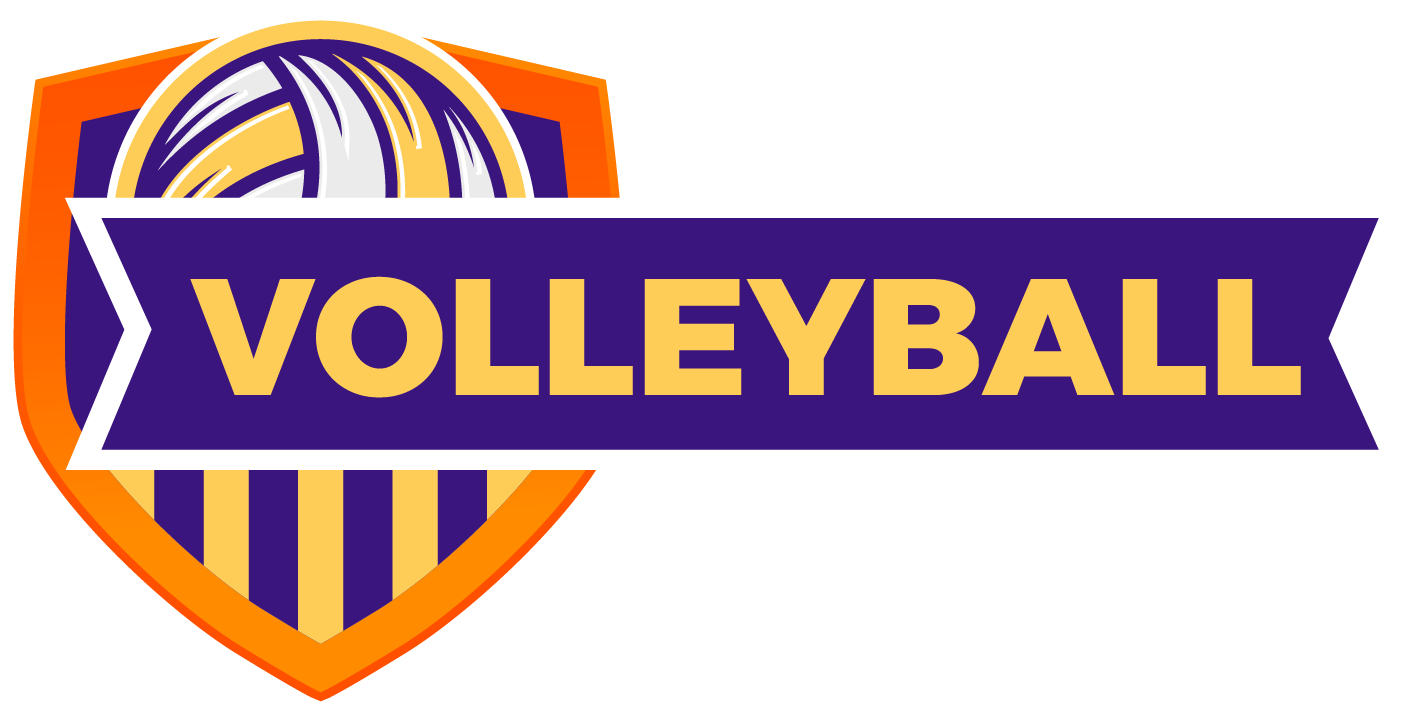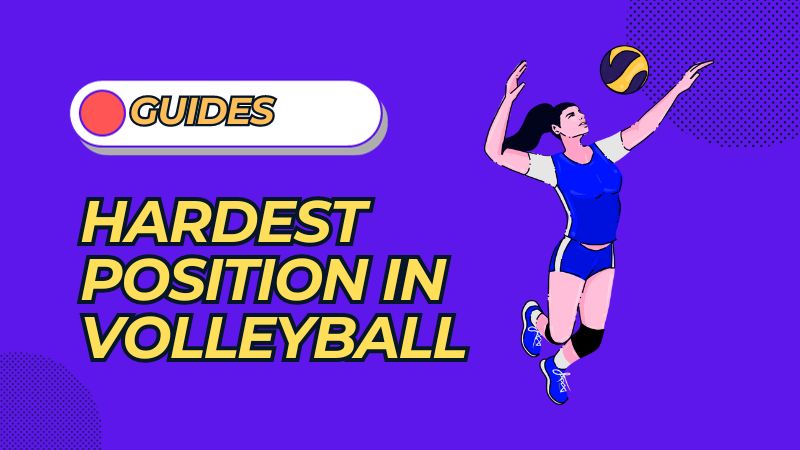In volleyball, a game that tests endurance, fitness, and skill, understanding the complexity of each position is crucial.
There are five primary volleyball positions: outside hitter, middle blocker, opposite hitter, setter, and libero. Each role is demanding in its own right, making it hard to pinpoint the easiest or the hardest volleyball position.
Let’s take a look at what constitutes the hardest position in volleyball, and what makes a volleyball position difficult.
What’s the Hardest Position in Volleyball?
In volleyball, while the setter’s position is considered the hardest, it’s virtually impossible to label one position as definitively the hardest without considering the others. Each position has its own unique set of demands and challenges.
Let’s explore these positions, from what many consider the hardest to the easiest, keeping in mind that each role is vital and challenging in its own right.
Setter Position: The Toughest Role
Often considered the hardest volleyball position universally, the setter serves as the team’s tactical brain and requires complete confidence. This role is arguably harder than any other position to master in the sport.
The main goal for setters is more than just getting the ball into the air; it requires precise control, timing, reaction time, and the ability to avoid common errors like double touches and net violations.
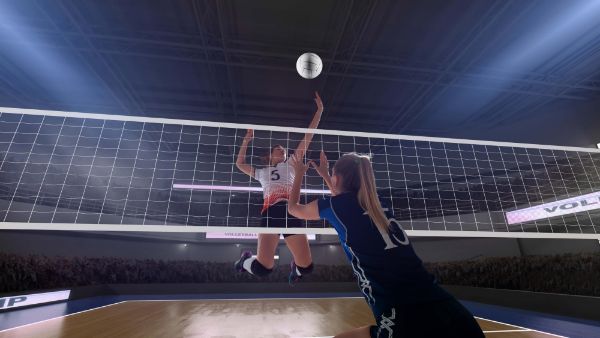
These mistakes are not limited to beginners; even experienced setters can find them challenging. Setting is the hardest skill in the game and takes constant effort to overcome.
The key to working this difficult position lies in the precision of setting the ball with the right power and placement, making it one of the most difficult positions that can take years to perfect.
Beyond their technical responsibilities, setters are also the brains of the team. They are responsible for handling the second ball in almost every play, determining where it should go next.
Physical and mental attributes are crucial for a setter. A minimum height of 180 cm (5.91 ft) is often considered necessary for effective competition at higher levels.
More than just physical ability, setters must possess logical thinking, unpredictability, and the capability to perform sophisticated maneuvers with the ball.
Outside Hitter & Opposite Hitter Positions: The Crucial Attackers
The roles of outside hitter and opposite hitter are pivotal in volleyball, each demanding a unique set of skills and mental fortitude. They have a huge responsibility for the entire offense of the team.
They hit more balls than anyone else on the team and are also the second and third hardest Volleyball positions.
Outside Hitter: The Versatile Powerhouse
As an outside hitter, the primary challenge lies in receiving serves, especially in men’s volleyball where serves can reach speeds of 134 km/h. This skill has a higher technical difficulty is not easily mastered and requires extensive training.
There are typically two types of beginners: those who naturally receive well and those who struggle significantly. If you’re adept at receiving without much training, the outside hitter position might be well-suited for you.
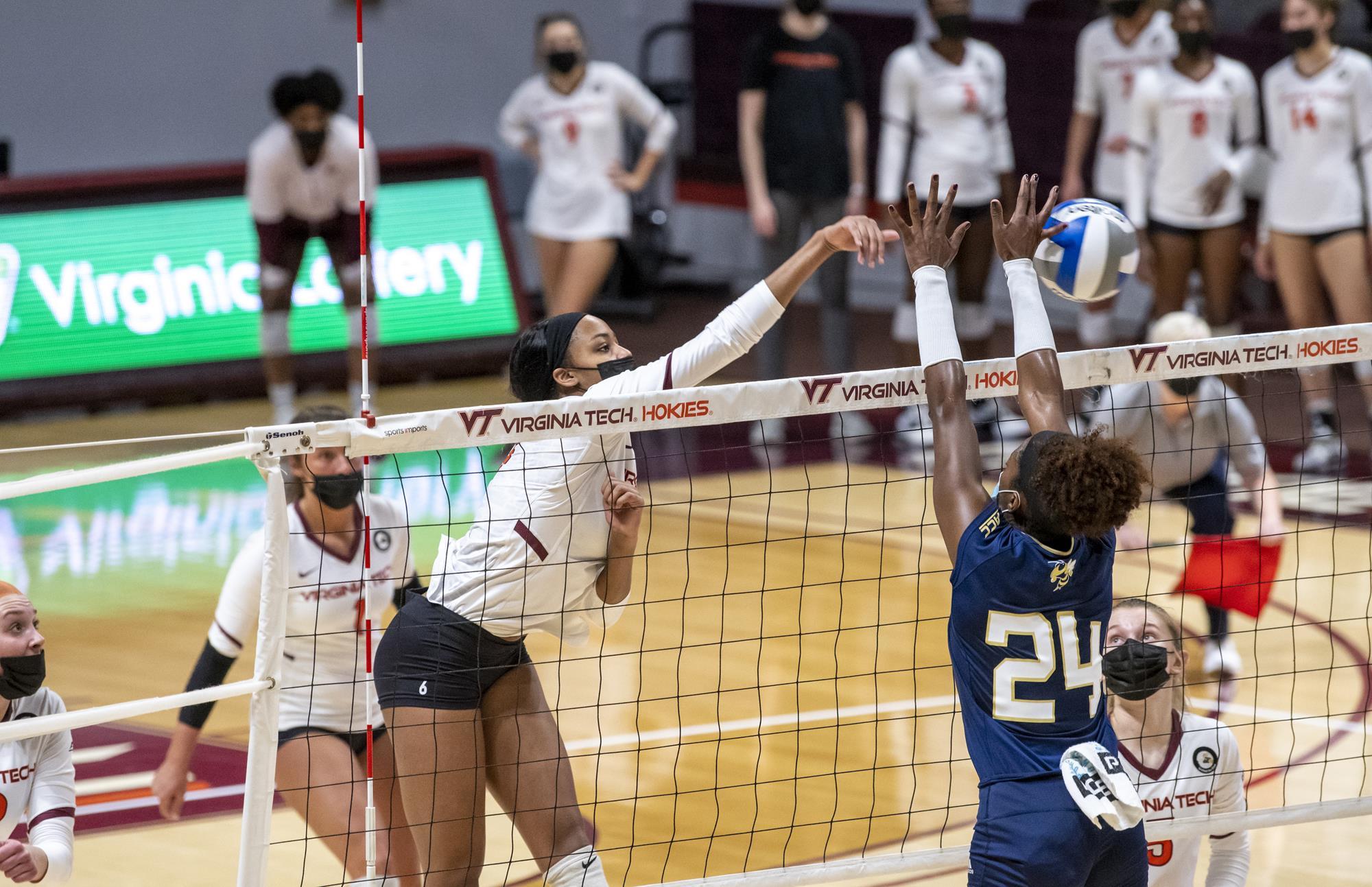
Aside from reception, outside hitters are also responsible for attacks – a role filled with pressure and excitement. Most volleyball players relish attacking, but executing it effectively is a different ball game. Consistency is key, as repeated blocks can lead to substitution.
Outside hitters are often tasked with blocking, necessitating a height of at least 185 cm (6.07 ft) to be effective in both attack and defense.
Opposite Hitter: The Specialized Attacker
The opposite hitter position, while sharing similarities with the outside hitter, has its unique aspects.
One significant difference is that opposite hitters are not primarily responsible for receiving serves, which can reduce the immediate pressure.
However, to excel as an opposite hitter, mastery in attacking and blocking is essential. The requirement to spike at least 330 cm (10.83 ft) means that height is just as crucial for opposite hitters as it is for outside hitters.
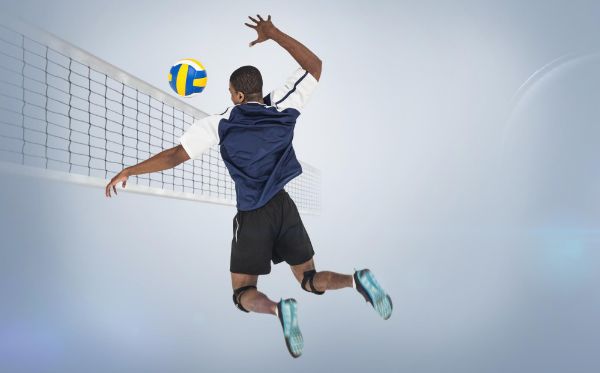
Opposite hitters must be prepared for numerous jumps, attacks, and blocks during a game. Physical fitness and form are non-negotiable, as the position demands endurance and strength.
Importantly, opposite hitters often score the most points for their teams, putting them in a high-pressure situation where they need to consistently perform and sometimes even lead the team in crucial moments.
Middle Blocker Position: The Defensive Giant
The middle blocker role, often perceived as the second easiest, is a position that demands a unique combination of physical attributes tactical, and technical prowess. A key requirement for middle blockers is height, thus a player standing 190 cm (6.23 ft) or taller is considered.
This stature is essential for overcoming high blocks and being a dominant force at the net. Middle blockers are often the tallest members of the team, tasked with the critical job of stopping the opposing team from scoring, particularly through effective blocking.
In addition to height, middle blockers must possess a strong jumping ability. This skill is crucial for reaching heights necessary to not just block effectively, but also to surprise the opponent with unexpected moves above the net.
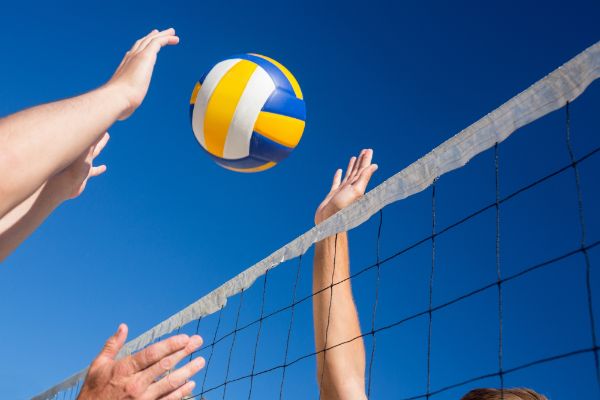
However, it’s not just about physical prowess. A middle blocker’s success also hinges on their ability to synergize with the setter. Constant communication and the development of complex blocking strategies are essential for outmaneuvering opponents.
Thus while it may not be the hardest volleyball position, it still means more responsibility
Contrary to other positions, middle blockers generally are not known for their athletic speed. They have different roles, often characterized by a more methodical, strategic approach to the game.
Their movements might not be as quick or agile as other positions, but their role is just as dynamic and crucial. They need to be adept at reading the game, anticipating the opposition’s moves, and positioning themselves effectively for blocks and attacks.
Dmitriy Muserskyi, standing at an impressive 218 cm (7.15 ft), exemplifies the quintessential middle blocker. His height, coupled with his ability to jump and coordinate with his teammates, particularly the setter, makes him a formidable force on the court.
Note that while height is a significant advantage, it’s the combination of so many difficult skills – both physically and mentally – that truly defines a successful middle blocker.
Libero Position: The Defensive Specialists
Often viewed as the easiest Volleyball position for beginners, the Libero position in volleyball is a unique blend of agility, mental resilience, and strategic thinking. This position doesn’t demand the physical prerequisites typically associated with volleyball, such as significant height or strength.
Most Liberos are shorter players with most standing below 180 cm (5.91 ft). Their lower center of gravity lends itself to enhanced athletic performance and better coordination, essential for the defensive prowess required in this role.
Unlike opposite or outside hitters, who usually dedicate considerable time to strength training – a particularly important aspect in men’s volleyball – liberos can focus more on developing precision and defensive skills.
This is one of the more awkward positions that may be a good fit for those who may not be naturally strong or who prefer to avoid extensive gym sessions. Despite being one of the easiest positions, it isn’t without its challenges.
A libero’s responsibilities, while seemingly less burdensome compared to other positions, carry their weight. The mental aspect cannot be understated – while there is less pressure in terms of scoring, each move a libero makes can be crucial for the team’s defense.
The role involves frequent diving and quick, explosive movements, making liberos susceptible to injuries. Proper training and technique in digging and floor defense are vital to minimize these risks.
Liberos occasionally find themselves in the position of setting the ball, typically when the primary setter is unable to take the second ball. This aspect of the libero’s role is often overlooked in training but is critical for maintaining the flow of the game thus it may sometimes not feel like the easiest position.
Liberos must be adept at quick decision-making and possess the ability to set up effectively, ensuring the team doesn’t lose momentum during these crucial exchanges. The particular defensive configuration also has a huge influence on how a Libero performs.
Factors Influencing a Volleyball Position’s Difficulty
In volleyball, the mastery of technical skills varies significantly across different positions, each demanding a unique skill set. The setter’s proficiency in setting is unparalleled, as it requires not only precision but also an acute sense of timing and spatial awareness.
This role involves intricately placing the ball for attackers, a skill that’s critical to the team’s offense.
On the other hand, middle blockers face their technical challenges. They need to have exceptionally quick reaction times and the ability to coordinate their movements with the team’s offensive strategy, often requiring split-second decision-making to effectively block and counter the opposition’s attacks.
Beyond technical skills, certain positions in volleyball carry a heavier load of intangible responsibilities and require a broader skill set. The setter, for instance, is more than just a player executing plays; they’re the strategic linchpin of the team. Their role involves comprehensive team coordination, constant communication, and the ability to make decisions under immense pressure.
Similarly, outside hitters juggle multiple skills, including receiving fast serves, executing powerful attacks, and contributing to blocks.
They often find themselves in high-pressure situations, where their performance can significantly influence the outcome of a match, thereby carrying a leadership role within the team.
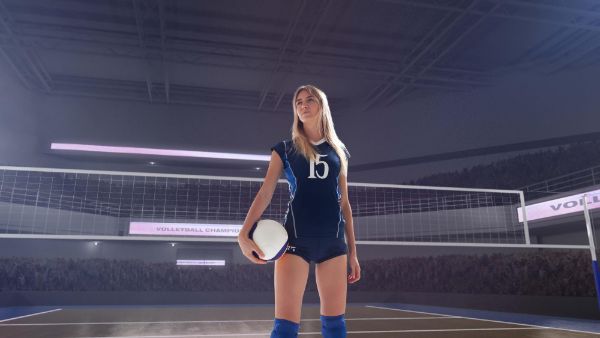
Conclusion
There are many difficult positions in volleyball and each is challenging in its unique way. The libero may not be the toughest position in volleyball, but mastering it requires some very difficult skills.
In any international-level tournament, good gameplay and team efforts are crucial; it’s not just about the difficulty of a position – the combination of effective offensive plays and strong defense is what ultimately wins the game.
FAQs
What is the hardest position in girls’ volleyball?
In girls’ volleyball, the setter position is often considered the hardest due to its demanding nature. It requires not only exceptional technical skills in setting and serving but also an in-depth understanding of the game’s strategy. Setters are the playmakers, responsible for orchestrating the team’s offense and making split-second decisions.
Is it hard to be a libero?
Being a libero in volleyball is often seen as beginner-friendly and less demanding in terms of responsibilities. However, this perception doesn’t fully capture the difficulty of the role. Liberos are crucial defensive specialists, requiring quick reflexes, agility, and excellent ball-handling skills. They also occasionally need to perform setting tasks, which can be challenging.
What is a weak side in volleyball?
The “weak side” in volleyball typically refers to the right side of the court. This naming convention arises because it is generally easier for right-handed players to attack from the left side. The right side, or weak side, is often where teams position players who may not be as strong in attack, although this can vary depending on the team’s strategy and the players’ strengths.
What is a libero in volleyball?
A libero in volleyball is a defensive specialist, playing a key role in the team’s backcourt defense. This position does not carry the same attacking responsibilities as other players, allowing the libero to focus primarily on receiving serves, digging, and passing. Although the libero has fewer responsibilities in terms of scoring, mastering the skills of quick reaction, precise ball handling, and defensive positioning is crucial.
